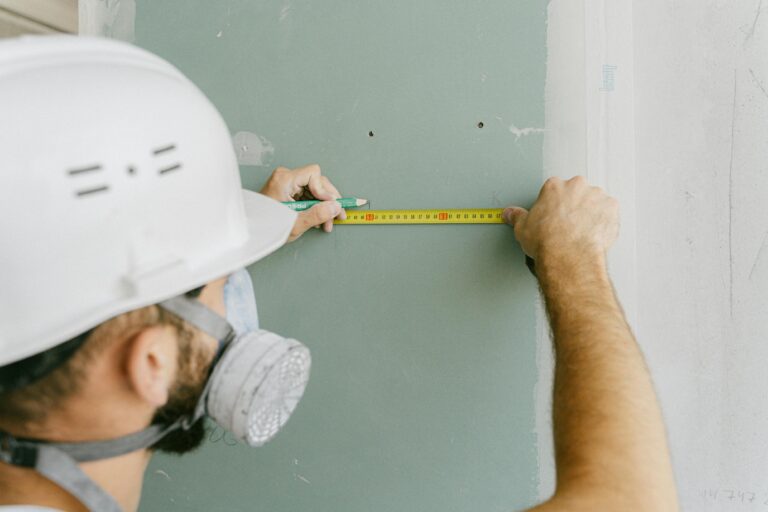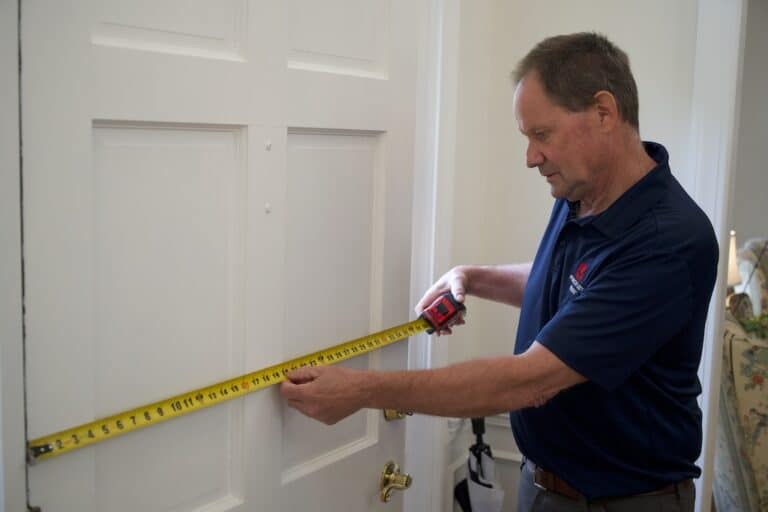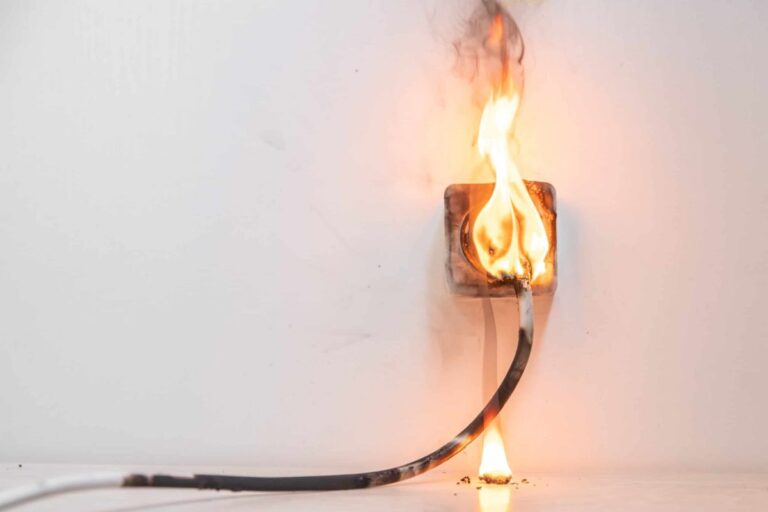Winter is heading our way! We can expect some chilly weather and temperatures below freezing across the country. In some areas, you may already have had your first icy blast of winter including record-breaking blizzards with early winter storms Abigail and Billy.
For homeowners, it’s best if we get ahead of the game and take care of seasonal home maintenance before the first freeze, ice storm, or snowfall. Then we can enjoy peace of mind during the beautiful winter season.
Why winterize your house?
Cold temperatures don’t have to be freezing to create a much bigger strain on our electric bills. Of course, the colder the mercury dips outside, the more our heating costs increase inside. Especially if we have a lot of leaks and drafts. Preventing heat loss is the most cost-saving measure you can take to keep your house warm inside.
We may end up paying hundreds or even thousands of extra dollars each winter for extra heating costs if we don’t prepare our homes properly. That’s hard-earned money you want to keep in your pocket, not floating away in the wind.
Freezing temperatures can cause water in our pipes to freeze, leading to pipes bursting and causing a flood. Imagine the damage if this happens when no one is home to turn off the water to the house and water gushes nonstop into your home for hours. What an expensive nightmare!

How to winterize a house
September-November is the best time to prepare your home for winter to lower your energy bill and help keep toasty warm air from escaping. It’s also the time to prepare your plumbing so you don’t get a nasty surprise flood one cold winter’s day. With a trip to the hardware store and some maintenance tips, you’ll be all set!
Weatherproof your doors
Installing a storm door to your exterior doorways is a great way to insulate your home. Also, add weather stripping to your doors and caulk around the outside and inside of the door frames to keep warm air from leaking outside. Or, instead of weather stripping, consider adding a door sweep to close the gap at the bottom of exterior doors to keep the chilly air out.
Winterize your windows
If you have old single-pane glass windows or windows with broken seals and you have the money to invest, it would be a great time to replace those with energy-efficient double-pane windows.
Some other ways to improve your windows’ energy efficiency—without replacing them— include adding window insulation film or installing storm windows. Be sure to weatherstrip your windows or install window caulking around all windows on the exterior and interior of your home.
For even more energy cost savings, hang thermal curtains on your windows and keep the curtains closed on windows in rooms that are not being used or rooms that face north. For windows facing south/west, open the curtains to let in the sunlight during the day (which converts to heat in your home) and close them at night to keep the warm air inside.
Inspect the attic
Hire a professional to check the roof for leaks and repair those before winter sets in. A leak is bad enough, but if you have the misfortune of experiencing an ice dam, the damage and cost can get even more severe.
Most homes do not have enough attic insulation. The US Department of Energy recommends having 8-16 inches of fiberglass or cellulose insulation with an R-value of 30-60. To find the best insulation for your attic, consider how much insulation you need, your budget, and the pros and cons of each type of insulation.
While you are sealing up your home to prevent heat loss, keep in mind that your home still needs adequate ventilation, or you can run into air quality concerns. Consider adding a heat recovery ventilator if the house is very airtight to introduce fresh air into your home.

Prepare the fireplace for winter
If you have a fireplace with a chimney, it’s wise to get it inspected and cleaned out in the late summer or early fall before your first fire for the season. Make sure the flue is able to seal shut so that warm air doesn’t escape your home through your chimney and cold air doesn’t settle down the chimney into your house.
If you won’t be using your fireplace often, think about getting a chimney balloon device to insulate your chimney in the winter.
Add smoke detectors and carbon monoxide detectors
If your home does not already have an appropriate number of working smoke detectors and carbon monoxide detectors, this is a good time to add them to keep your family safe.
If you already have the monitors, test the batteries and replace any weakened batteries with strong new ones.
Winterize your air ducts
Another way to get your house ready for winter is to repair loose ducts under the house. While you are there, insulate the ductwork to make your HVAC even more energy efficient.

Winterize your yard
To prepare your yard and outdoor living spaces, seal the deck in the fall to weatherproof it. And winterize your pool by covering the pool, adding winter chemical treatments, blow out the lines (if it is above ground), and drain the pump For an in-ground pool, you can’t clear the water out of the lines, so you’ll need to remember to run the pump if the temperatures get below freezing.
Clean and do winter maintenance on your yard equipment then winterize your lawn mower by draining the fuel and running the last excess of gas so it will be in good condition in the spring. You can also disconnect and drain the gas lines.
Don’t forget to winterize your garden, if needed, in your location.
Prevent freezing water from bursting the pipes
To prevent ice dams from creating major roof damage, clean gutters, and downspouts in the fall. Wrap outdoor pipes with insulation and insulate pipes under the house with foam water pipe insulation.
Winterize garden hoses by emptying and storing them in the shed or garage. Then shut the interior valve for exterior faucets and drain the water before winter.
Hire a professional to winterize your sprinkler system so that water doesn’t freeze in the sprinkler heads and pipes, destroying your expensive system.

Prepare the hot water heater for winter
If you have a hot water heater outside or in the garage or unfinished basement, wrap your hot water heater in an insulating blanket during the winter months to conserve electricity. Hot water heaters are the second biggest energy users in the home, after the HVAC system, according to the US Department of Energy. So you want to keep all the heat in your water heater and not let it escape into the air. And, of course, always set your hot water heater’s temperature to 120 degrees Fahrenheit.
This is also a good time to figure out how to drain the hot water heater or have a professional drain it for you.
Another money-saving option is to install a tankless water heater so you don’t have to worry about heat loss and energy loss in a large tank.
Upgrade and maintain your HVAC system
Keeping your heating system running smoothly is key to having top energy efficiency in your home since heating and cooling your living spaces is usually your biggest energy expense each month.
Replace furnace filters and air filters with HEPA furnace filters to keep your air clean and your furnace in good condition.
Inside your home, take these simple steps to make the most of your HVAC system:
- Close vents in unused rooms.
- Reverse the ceiling fan direction for winter.
- Move furniture off of vents.
- Be sure needed vents are open.
- Test your heating system ahead of time so you can get it fixed if something is wrong before the first cold snap of the year.
If you haven’t done so already, install a programmable thermostat. A smart thermostat can save you a remarkable amount of energy on your electric bill if you adjust your average house temperature in winter to 68 degrees during the day and 60-65 degrees at night.
Remember to adjust your house’s humidity in winter if the air gets too dry. Add humidifiers to your bedrooms or a whole-house humidifier to keep static electricity levels down and to help everyone’s sinus passages stay healthy and moist. Some HVAC systems can also monitor your home’s humidity and make adjustments.
Hire a professional to winterize your air conditioning unit to get it ready for winter.
Need help winterizing your house in the Columbia, SC area?
At Punch List Pros, we can help you winterize your home so you’ll be prepared for anything Mother Nature may throw at you this year.
Please contact us today!
Related
Home Safety Tips to Protect Your Family
Will a Smart Thermostat Save You Money?
Easy Ways to Improve Your Home’s Security to Protect Your Family







